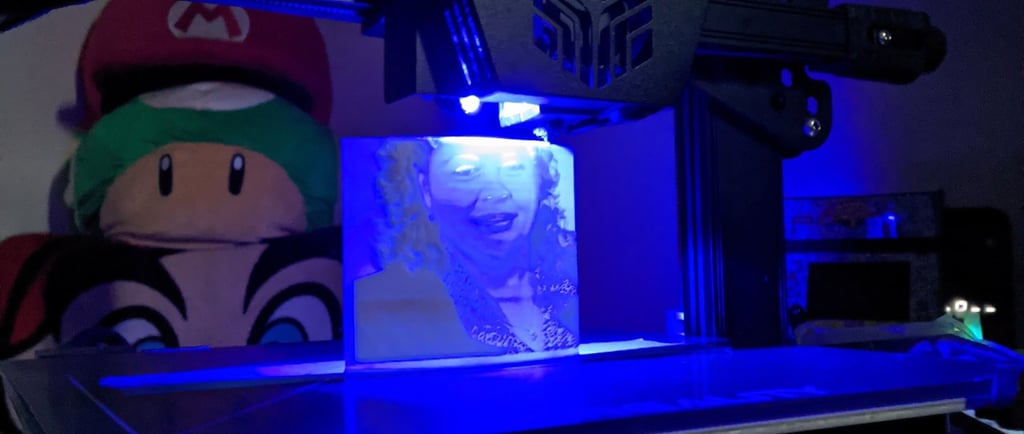More Than a Fix: Honoring a Friend with Pixels, Plastic, and Purpose
How a longtime work friendship, a bit of open-source software, and a 3D printer came together to make something unforgettable.
William
5/12/20253 min read


Back in 2016, I landed a short-term contract gig helping migrate a company from Windows XP to Windows 7. It was just supposed to be a temporary job—something to pay the bills while helping out during a transitional phase following a company acquisition.
But it ended up being a turning point in my life. Because that’s when I met Linda.
From the moment we crossed paths, Linda was one of those rare people who made you feel welcome, appreciated, and seen. She had a warmth that cut through the typical office formality, and to my surprise, she became one of my biggest advocates. Every chance she got, she recommended me for full-time roles.
It didn’t happen right away. But in 2017, another opportunity came knocking. The on-site desktop support tech was retiring and I was asked to interview. As I walked into the building, who do I see but Linda, standing in the lobby. She greeted me with a big hug and wished me luck.
I got the job.
Over the years and through more transitions—more migrations, ownership changes, and evolving infrastructure—Linda and I stayed connected. I was her IT support, yes, but also a kind of trusted “go-to” for everything from domain permissions to help with her home PC. We shared jokes, frustrations, and the occasional personal story in between system updates and password resets.
Then came 2020, and like so many workplaces, we shifted to remote work. I still supported Linda, just now from behind a screen. But what I didn’t know was that her health was beginning to decline. In late 2021, we got the news: Linda had passed away.
Her loss hit the team hard. She had touched a lot of lives. And when one coworker proposed making a picture book to give to her husband, I knew I wanted to contribute in a meaningful way.
That’s where GIMP came in. Using the open-source image editor, I helped clean up and edit the collection of photos. I removed backgrounds, cropped out distractions, color-corrected faded shots, and even upscaled a few that were too small to print well. It was part technical challenge, part labor of love.
But I wanted to do more.
I had just gotten into 3D printing and learned about lithophanes—3D-printed images that reveal themselves beautifully when backlit. I took one of the pictures I edited of Linda and turned it into a lithophane Christmas ornament. It was simple, subtle, and softly glowed with her image when held to a light. We gave both the picture book and the ornament to her husband. He was moved in a way I can’t quite describe, and I felt, for the first time in a while, like my technical skills had intersected with something deeper.I actually printed two ornaments—one for her husband, and one that still hangs in my office to this day. It’s small, backlit, and quietly present. A reminder that while Linda may be gone, she is far from forgotten. I miss her dearly. And I’m so grateful I had the chance to be part of her life.
Word of the project spread. Another coworker, Sharon, came to me with a request: her friend had lost her son in a tragic motorcycle accident. She asked if I could make a lithophane for the grieving mother. Of course I did. The ornament I made now goes with her everywhere she goes.
That’s the kind of thing no resume bullet point can explain.
I originally built MotoLinux.com just to have a custom email domain, but it’s grown into a kind of portfolio and blog hybrid—a space where I can share not just what I do, but why I do it. Sometimes that means discussing open-source software, or 3D printing tips, or obscure Linux troubleshooting. But sometimes, it means telling stories like this.
Because behind every terminal window or slicer preview is a human being trying to make something work—something that matters.
